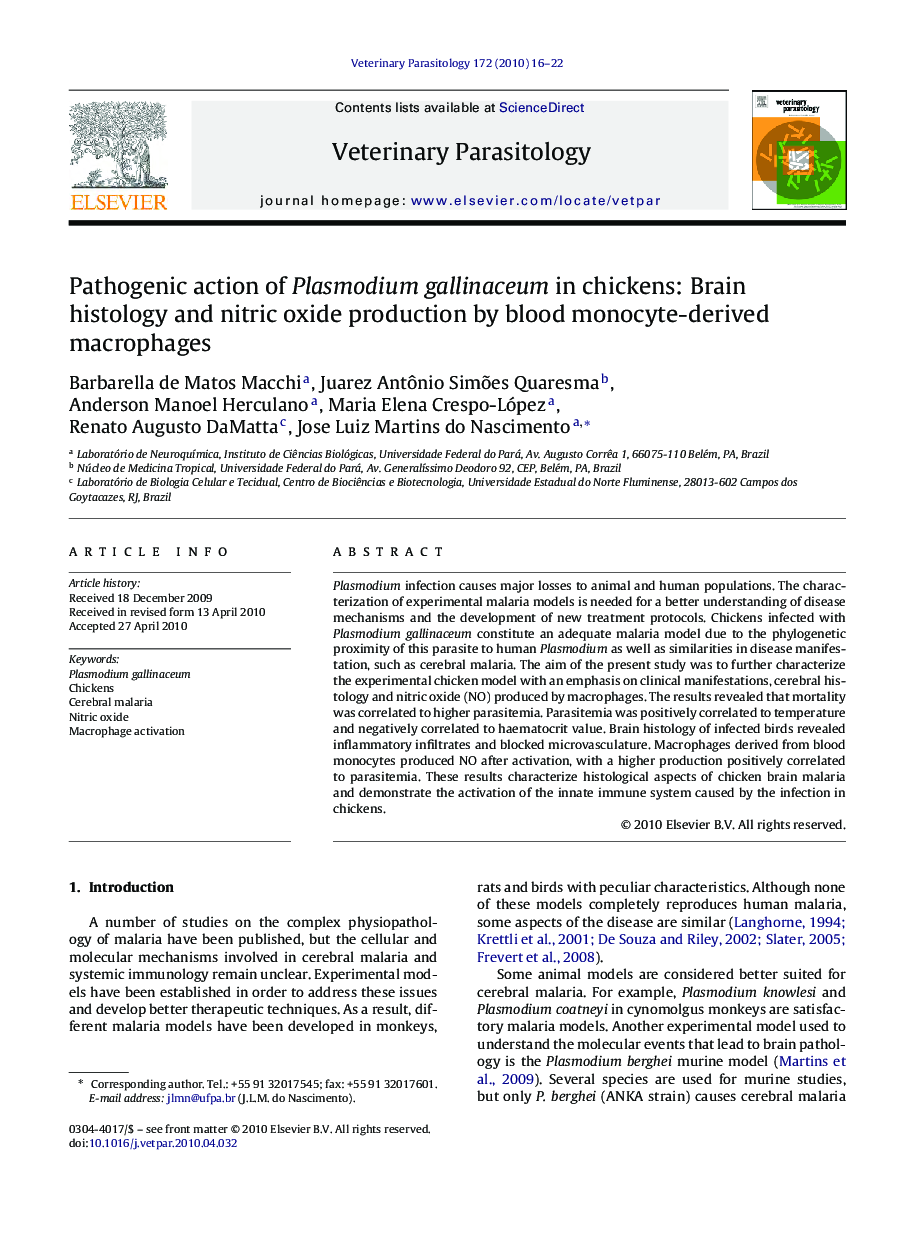| Article ID | Journal | Published Year | Pages | File Type |
|---|---|---|---|---|
| 2470453 | Veterinary Parasitology | 2010 | 7 Pages |
Plasmodium infection causes major losses to animal and human populations. The characterization of experimental malaria models is needed for a better understanding of disease mechanisms and the development of new treatment protocols. Chickens infected with Plasmodium gallinaceum constitute an adequate malaria model due to the phylogenetic proximity of this parasite to human Plasmodium as well as similarities in disease manifestation, such as cerebral malaria. The aim of the present study was to further characterize the experimental chicken model with an emphasis on clinical manifestations, cerebral histology and nitric oxide (NO) produced by macrophages. The results revealed that mortality was correlated to higher parasitemia. Parasitemia was positively correlated to temperature and negatively correlated to haematocrit value. Brain histology of infected birds revealed inflammatory infiltrates and blocked microvasculature. Macrophages derived from blood monocytes produced NO after activation, with a higher production positively correlated to parasitemia. These results characterize histological aspects of chicken brain malaria and demonstrate the activation of the innate immune system caused by the infection in chickens.
